
Regardless of the type, a home heating system usually works by generating or extracting heat from a fuel source and then transferring it into the indoor space. Hence, the types of heating systems are typically categorized based on the fuel they use and how they distribute heat throughout the home. The fuel can be natural gas, propane, solar, electricity, wood, or even the ground, as in the case of geothermal heating systems. And the distribution medium may be air or water.
Some heating systems also provide cooling during summer by reversing their working principle. It’s also worth noting that each type of heating system has sub-categories.
In this article, we look at the seven major types of home heating systems and their pros and cons to help you choose.
- 7 Types of Home Heating Systems
- Furnaces (Forced Air Systems)
- Boilers
- Heat Pumps
- In-Floor Radiant Heating Systems
- Baseboard Heating Systems
- Fireplaces
- Ductless Mini Splits
- How to Choose the Right Home Heating System
- Heating Accessories to Consider
- What’s the Most Eco-Friendly Home Heating System?
- The Bottom Line
7 Types of Home Heating Systems
- Furnaces (forced air heating systems)
- Boilers
- Heat Pumps
- In-floor radiant heating systems
- Baseboard heating systems
- Fireplaces
- Ductless mini-splits
Furnaces (Forced Air Systems)
Furnaces are the most popular type of heating systems because they’re relatively inexpensive and can use a wide variety of fuel sources to heat homes, including electricity, natural gas, and fuel oil. In addition, the ducts can be used by your air conditioner during summer.
A furnace works by burning fuel (such as wood or natural gas) inside a chamber and then distributing the heated air throughout the house using blowers. These blowers are fans powerful enough to force the hot air into the ductwork and throughout the home. For that reason, furnaces are also called forced air distribution systems. Electricity may also be used to heat the air in a furnace.
The exhaust gas is taken outside via chimneys. In older systems, the furnace uses a lot of energy to keep the exhaust air hot enough to move up through the chimney. But modern furnaces have an inducer fan to force the air through, thereby saving energy.

Advantages of Furnaces
- Furnaces are more affordable than most other home heating systems, although the cost varies with the system’s efficiency
- A furnace can last 15-25 years before requiring a replacement
- Can cool your home during the summer months by connecting to an air conditioner or heat pump
- Although old models can waste significant energy, modern furnaces can be up to 98.5% energy-efficient, converting nearly all the fuel to useful heat
- Very quick at heating or cooling a room
- You have the flexibility of adding air filters and humidifiers
Disadvantages of Furnaces
- You would need to create spaces in walls to install the ductwork
- Forced air systems produce noise that many homeowners do not like, although newer models are a bit quieter
- Forced air systems heat the air rather than the objects in the room
- Without humidifiers, the air can get very dry and uncomfortable
- Without filters, a furnace may distribute dust and allergens that find their way into the ducts.
Boilers
Boilers, also known as radiator distribution systems, heat up a room by sending hot water through pipes to radiators. Like in a furnace, the water is first heated at a central location before being sent into the pipes strategically positioned throughout the house. The heat is released into the room via radiators, convectors, or air handlers. Many older homes in the US use this type of heating system. It’s also pretty common in Europe.
Boilers and furnaces are categorized as central heating systems because the heat is generated at a fixed point and then distributed. Both systems are similar in many regards: the main difference is that while a furnace distributes heated air, boilers distribute heated water. Like the furnace, a boiler heating system can use different fuel sources.
Although boilers are sometimes called steam radiators, the actual steam radiators distribute heat as gaseous steam rather than water. Whichever the case, the hot water or steam cools down and returns to the radiator to be re-heated. Then the process repeats.
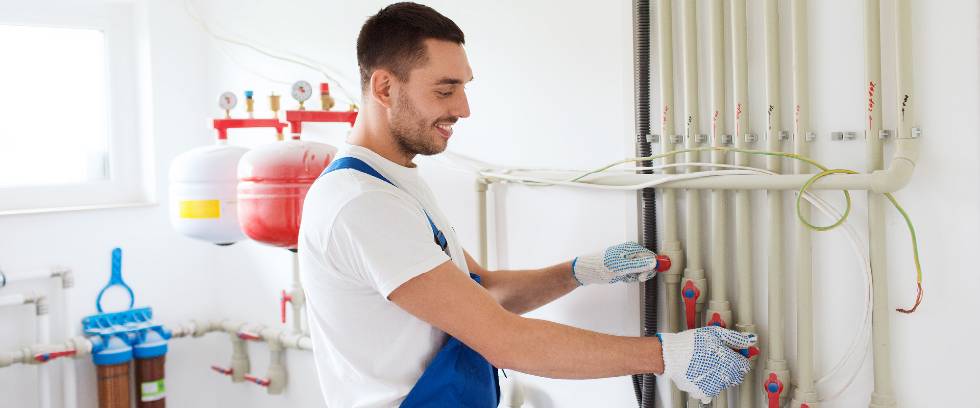
Advantages of a Boiler Heating System
- Boilers produce radiant heat, which many Denver homeowners find more comfortable than the one from forced air systems.
- New boilers are highly energy efficient, with ratings as high as 95%. Just avoid the older models, as these can waste up to 50% of energy.
- Boilers can last 10-15 years, although higher-end ones can last for 20 years or more.
- Boiler heating systems provide zoned heating; you can control what part of the home should be heated once you have zone controls installed.
- The air from radiation heating systems is not as dry as forced air systems.
Disadvantages of Boilers
- Boilers can be expensive to install and maintain, especially when you don’t already have the radiator and piping required.
- The radiator, which is usually positioned near windows, can be unsightly and limits space available for furniture.
- Boilers are only used for heating, unlike furnaces that can provide cooling during summer.
- Boilers do not work with filters and humidifiers, so you can’t do much to improve the air quality unless you take measures unrelated to the boiler itself. However, this is not often a challenge since boilers do not release air into the home.
Heat Pumps
Virtually the latest technology in the world of heating and cooling is the heat pump. This type of heating system works like air conditioners, extracting heat from the warm air outside and delivering it into your home through an air handler. During the summer months, the process is reversed: it extracts heat from the indoor air and passes it outside, thus cooling the temperature.
Unlike furnaces and boilers, heat pumps do not generate heat but only transfer it. This heating system uses electricity as its fuel source.
You’ll find different variations of heat pumps in the market today, with slight differences. We discuss some below:
- Ducted or Air-source heat pumps – these extracts heat from outdoor air via a refrigerant. As the name describes, ducted heat pumps require a duct through which the air will pass into the home. The installer may place ducts, vents or louvers in the rooms to control air flow. Ducted heat pumps are also known as air-source heat pumps.
- Ductless heat pumps – as you might have guessed, this type doesn’t require any ductwork. A ductless heat pump is a standalone appliance; meaning setup cost doesn’t impact your budget. Just place it in its position, and it does its job. Plus, the design is sleek, helping to elevate your interior decor. With a remote control, you can alter the settings and temperature — fully digitized. A ductless heat pump is also not bulky, making it easy to install in remote parts of your room.
- Portable Heat Pumps – these are small units you can plug and use in a small space, as long as there’s a window to pass the intake/exhaust hose through. You may even decide to get one for each room or use only one by moving it wherever needed; they’re that small and portable, like a mini air conditioner.
- Geothermal heat pumps – Unlike air-source heat pumps, geothermal or ground-source heat pumps draw their thermal energy from the earth. Interestingly, the ground temperature remains almost constant all year round, allowing the heat pump to regulate the indoors, whether it snows or shines. They are also called underground heat-pumps. Geothermal heat pumps are some of the most energy-efficient heating systems in the market, but installation is lengthy and expensive. It makes more sense to install this type of heating system during home construction.
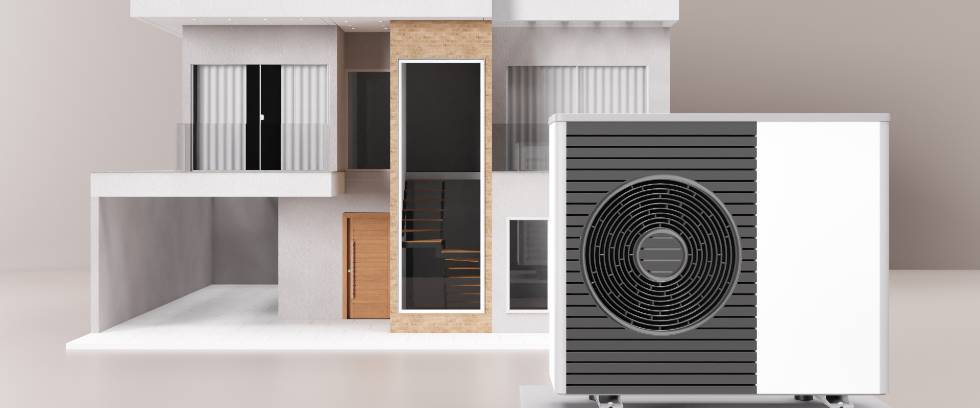
Advantages of Heat Pumps
- Most heat pump models are reversible, meaning you can use a unit for both heating and cooling (you don’t have to buy a separate cooling system).
- They’re relatively easy to install, especially the ductless types.
- The sleek design makes most heat pumps a far better option than radiators.
- When the weather is too cold for the heat pump to regulate alone, you can leverage hybrid heating by adding a supplemental furnace.
- Since heat pumps only transfer but does not generate heat, they tend to be more energy efficient than their counterparts.
- In mild temperatures, a heat pump can help you save up to 75% of the cost of using a furnace or boiler.
- Very quiet
Disadvantages of Heat Pumps
- Heat pumps are best for places with mild climates as they cannot effectively regulate the temperature in very hot or cold weather.
- The initial cost can be a bit scary (although you would greatly benefit from it later due to the low installation and operational cost).
- Installing geothermal heat pumps is expensive and time-consuming.
In-Floor Radiant Heating Systems
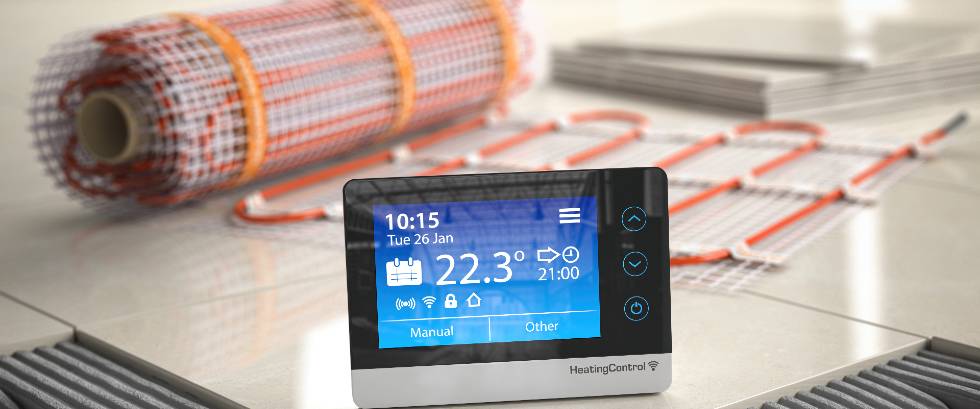
The in-floor radiant heating system works just as it sounds: tubes are installed inside the floor, and as hot water passes through the tube, it heats the floor and then the room. The tubes can be cast within concrete floors, but for a wooden one, the tubes have to be installed above or underneath. The water heats up by reason of a central boiler or water heater and recycles indefinitely.
The most striking thing about in-floor radiant heating is that it heats material objects (flooring, furniture, etc.) rather than the air, as is the case with most other heating systems. It’s also very quiet and energy-efficient. However, it heats up very slowly, and maintenance can be challenging since the pipes are hard to access. That said, maintenance would hardly ever be necessary with this type of heating system, and it can last for decades.
Instead of hot water, some radiant floor heating systems use electrical wiring underneath or within the floor to generate heat. However, the heat is minimal, and most of the energy is wasted. Such systems are mostly installed in small spaces like bathrooms where you only need your feet warm.
Advantages of In-Floor Radiant Heating Systems
- The heat is cozier and more evenly distributed than furnaces
- No chimneys are required
- Low maintenance requirements
- You can power it with a central boiler, solar, electricity, or even a heat pump
- Doesn’t distribute allergens
Disadvantages of In-Floor Radiant Heating Systems
- When problems arise, it’s hard to repair because of the hidden piping
- It takes time to heat up a room to a comfortable temperature
- In-floor heating systems are expensive and time-consuming to install
Baseboard Heating Systems
Baseboard heaters are usually installed as a supplemental heating solution. They come in two forms based on their distribution: hot water baseboard heaters, also known as hydronic systems, and electric baseboard heaters.
Hot water baseboard heaters work pretty much like the radiant heating system but are more of an updated version. As the hot water flows through the pipes, it goes to a series of baseboard heating units that radiate the heat into the room through thin metallic components (fins) surrounding the pipes. This system can use fuel, solar, natural gas, propane, fuel oil, or electricity as source fuel.
The electric version distributes heat through electricity rather than water. Since the radiation begins at the baseboards, warm air goes up into the room while colder air moves down to be heated.

Advantages of Baseboard Heating Systems
- Although similar to in-floor radiant heating systems, baseboard heaters are more energy efficient.
- These systems require little maintenance
- Works quietly
- You can control the temperature accurately
- Hot water baseboard systems can last for several decades
Disadvantages of Baseboard Heating
- The fins around the baseboards can obstruct furniture placement and curtains.
- It does not pair well with air conditioning.
- Just like radiant floor heating, baseboard heaters take long to heat up a room.
- Electric baseboards can damage easily.
Fireplaces
As ancient as the discovery of fire itself, fireplaces are one of the most widely used heating methods globally. They can create a warm, inviting countryside ambiance during cold winter nights.
Homeowners traditionally use wood as fuel while the fumes escape through the chimneys, but there are now gas pits that burn natural gas or propane to produce flames. Since the heating comes from a specific source and isn’t distributed by ducts, you need to position the fireplace strategically.
Gas fireplaces have a high efficiency of up to 70%. On the other hand, EPA-approved Wood fireplaces come in ceramic glass to prevent heat loss, and you can always adjust the fire intensity to your needs. And there’s the pellet stove fireplace that comes in different designs—choose anyone that best suits your decor. It’s also as efficient as the gas model.
Advantages of Fireplaces
- Fireplaces generally have low maintenance requirements
- Wood is cheap, so operational cost is low
- Fireplaces can elevate the decor and ambiance of a room
Disadvantages of Fireplaces
- They generally require heavy ventilation to allow the exhaust gases escape
- You’ll need to add firewood continuously as it burns out
- Although neither strenuous nor costly, cleaning should be done to eliminate soot.
- Starting the fire can sometimes take a while
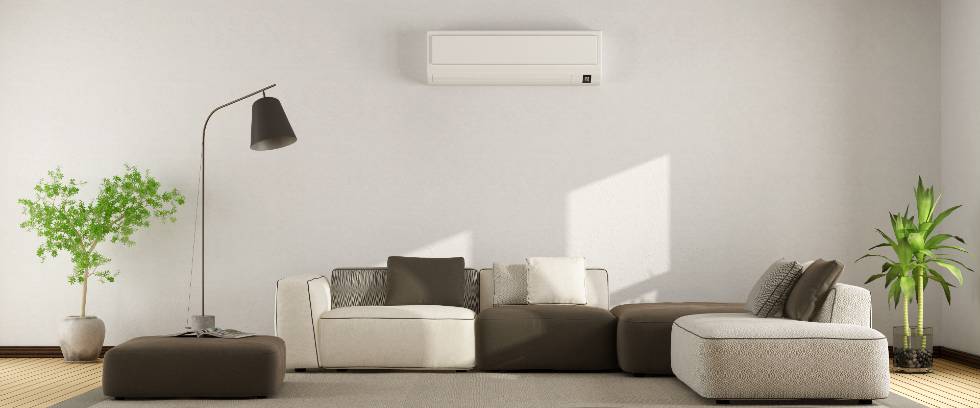
Ductless Mini Splits
Most homeowners use one heating system for the entire property. But what if you don’t want to heat one room as much as another? If you have a home where the temperature varies from room to room, the perfect solution is to use ductless mini splits.
With ductless mini-splits, you can execute zoned heating such that each room has its own thermostat. So you can create separate HVAC zones wherever a unit is. The units are ductless, so there are no worries about air ducts and pipes — super easy to install.
Ductless mini-splits are an excellent heating system for larger homes without ductwork and where temperature varies from room to room.
Advantages of Ductless Mini-Split Heating
- Ductless mini-splits offer independent heating due to zoning
- There’s better energy efficiency since you can turn off the thermostat in rooms that do not require heating at that time
- Even when there are more windows and insulation in certain rooms, zoning allows for more comfortable heating throughout the entire property. Instead of overheating some rooms, you can turn down the thermostat settings in that area.
Disadvantages of Ductless Mini-Splits
- Ductless mini-splits have a heavy price tag and are expensive to install.
- The indoor units are not very sightly as there must be a drain near each unit to catch condensation.
- Short cycling may occur when the air handling units are misplaced or oversized.
How to Choose the Right Home Heating System
There are many things to consider when choosing the best heating system for your home, such as initial cost, operational cost, energy efficiency, maintenance, and durability. Since the different heating systems vary in all of these regards, it’s worth weighing the pros and cons of each to know which appeals most to you.
For example, although pricey, a heat pump can be an excellent choice in warmer climates like Denver where you don’t need your heating system in the highest setting. But in colder regions like the Northeast, a furnace or radiant heating will fare better.
Suppose you have an older home and are considering replacing your faulty, outdated heating system. In that case, it is more reasonable to go for modern, more energy-efficient options that are now available. When unsure, it’s best to talk to an HVAC professional near you. They can recommend the best heating system based on your location, budget, property size, and whatnot.
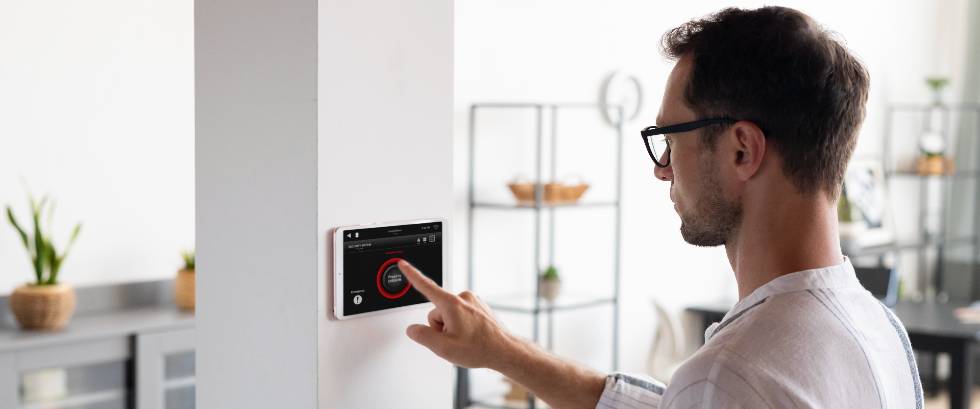
Heating Accessories to Consider
If you’ve been using an old heating system, chances are you don’t know life could be so much easier with the modern types of furnaces. Here are some accessories you could use alongside your new home heating system.
Programmable Thermostats
Have you ever returned from the outdoors to a freezing home? With a ducted heating system, it will usually take a while to heat up such a chilly room, meaning you have to endure the discomfort for some time. Programmable thermostats can be an ideal solution to this problem.
With a programmable thermostat, you can operate your home heating system wherever you are, whether you’re wrapping up things at the office or on the way home. That way, you can turn on your ducted heating system long before you arrive.
The programmable thermostat uses Wi-Fi and connects to an app on your smartphone. It will usually also feature scheduling so that it can turn on automatically at about the time you usually return home, and location-based triggers so it can turn on/off based on your proximity.
Smart AC Controllers
A smart AC controller can make life easier if you opt for a ductless heating system such as a mini-split or ductless heat pump. Whether you’re lounging on your sofa or cuddling up in bed, you can control your heating from your smartphone via a smart AC thermostat. These devices offer smart features like location-based triggers, scheduling, and intelligent temperature regulation.
Humidifies and Filters
If you choose a furnace as your heating system, you won’t fail to notice how dry and uncomfortable your skin gets when you stay indoors for long. That’s because forced air systems cause your indoor humidity to drop, leading to dry air. By installing a humidifier, you can solve that challenge. Installing filters can also help prevent allergens from following the hot air into your home.
What’s the Most Eco-Friendly Home Heating System?
Geothermal heat pumps are the most eco-friendly home heating system available today. They draw their heat from the earth rather than from fossil fuels and release zero emissions into the atmosphere. The cost of installation is, however the major deterrent.
Air-source heat pumps are also highly energy efficient and eco-friendly as they do not generate heat but only transfer it. Other heating systems that burn fuels to generate heat, such as gas furnaces, are not as eco-friendly because they release emissions, contributing to climate change.
The Bottom Line
When it comes to heating your home efficiently, there are just so many options. And there are sub-categories within each type of heating system, so it’s easy to run into a dilemma.
Again, the best way to go is to consult with an HVAC technician near you. In addition to picking the best-fit system for you, they can also recommend the highest-quality model and even help with the installation.
JD’s Plumbing, Heating and Air Conditioning Service is an award-winning Denver plumbing and heating contractor with extensive experience in all types of heating systems. Contact us today.





